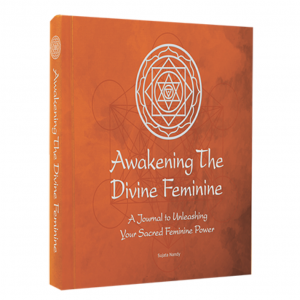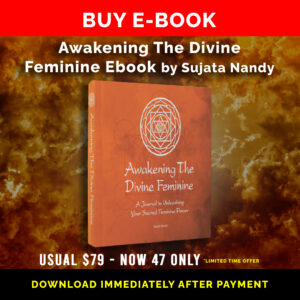Tantrik mystic traditions of Bengal speak of the goddess Kali, often addressed as Tara, as Krsna, locally known as Keshto. Both share the dark-complexion, ‘shyam-ranga,’ and Their partners, Shiva for Kali, and Radha for Krsna, are as fair as camphor, ‘karpura-gaur.’ The stories that connect these two very distinct traditions — the blood sacrifice demanding Tantrik tradition of Kali and the vegetarian Brahmanical Vaishnava tradition of Krsna come through in phrases and stanzas that make up some of the most mesmerising songs of the Baul minstrels and even bedtime stories. The prevailing sentiment in these stories is one of pure love, that surpasses the demands and limitations enacted by customs and law.
Many ancient Hindu tales recount the story of how Krsna assumed the form of Kali as a ‘lila,’ or a divine play. The plot evolves in the puranic forest of Vrindavana where the cowherd Yadavas were peacefully residing with their beloved leader and friend, Sri Krsna.
Every night, upon hearing the flute of Krsna, Radha would quietly slip out from her home to secretly meet with her lover in the deep forests. This was eventually observed by the shrewd sisters-in-laws of Radha, Jatila and Kutila, who informed Radha’s husband, Ayan, of his wife’s so-called adultery.
Enraged, Ayan set off to chastise the reprobate, into the deep woods. Krsna had already known of what was in the air and quickly asked Radha to pick up wild fruits and flowers that she could find and sit down at His feet in a worshipful gesture.
Radha obeyed His commands and soon Krsna had Himself transformed into Kali — the ‘ishta,’ or family deity of Ayan that, when Ayan finally arrived at that place, he found his wife doing puja (prayer), for their family deity, Kali, saving Radha from adverse punishment.
In the last 500 years, Shakti sadhaks of eastern India personally felt the unity of these two important forms of Hindu pantheons. Many songs and poems were composed in honour of this united form which was named KRSNA-KALI.
In many such songs, the sadhak posed himself as a little child requesting his beloved mother to drop Her ghastly look to assume the more pleasing form of Krsna with kadamba garlands, yellow robes and enchanting crown of flowers and peacock feathers.
This day is also commemorated in Bengal as Phalaharini Kalika Puja, which takes place in the Amavasya (new moon might), of April – May month. This is a time when India is abound with scented flowers and the sweetest of fruits like mangoes, that it is customary to offer all seasonal fruits to Kali on this day symbolising the surrender of ego and karmic reactions of a man to the supreme.
Many people presume that Kali is the fierce aspect of Durga and Krsna is the god of love whence there are adequate similarities between Kali and Krsna that often merge the one into the other. Some of the similarities are:
THEIR DARK COMPLEXION: Both Kali and Krsna are either black or blue. The blue aura of Kali and Krsna represents divinity whereas the black represents the darkness that consumes all evils.
THEIR NAMES: Both Their names share a common meaning “the black one.” That is why Krsna is called Shyam and Kali is called Syama. In Bengal, Krsna is called Jagannath and Kali, Jaganmayee.
NATURE & COSMOS: In the epic tale of the Mahabharata, young Krsna shows the whole cosmos inside His mouth to His mother Yashoda. In Hinduism, it is believed that He is the holder of the cosmos while Kali dances on the cosmos so that everything remains in balance perpetuating the cycle of birth and death.
THE AVATAR PHILOSOPHY: Krsna is the avatar of Vishnu and Kali is the avatar of Devi Mahatmayam. They descend for a common purpose to slay evil and restore truth and peace. Krsna is the slayer of Kamsa and Kali, the slayer of demons Chanda, Munda and Raktabija.
ASSOCIATION WITH BATTLEFIELDS: Both of Krsna and Kali are mostly associated with battle fields. In the Mahabharata, Krsna is associated with the Battle of Kurukshetra and according to the Devi Mahatmaya, Kali is associated with the battle against Sumbha and Nisumbha.
THE JAGANNATH IDOL: Lord Jagannath of Puri is considered the image of both Krsna and Dakshina Kali. The Dakshina Kali Temple of Puri has important religious associations with Jagannath Temple and it is believed that Daksinakali is the Guardian of the kitchen of the Lord Jagannath Temple.
THEY BOTH DON’T HAVE A VEHICLE: Krsna is seen with a Peacock and Kali, with a Jackal. Other Hindu deities ride on Their mounts but Kali or Krsna never ride on them. Although the peacock and the jackal are symbolic to both these Godheads, it also means that both of these deities work with other beings of nature with each having a purpose of their own.
In India in most of the houses and workspaces (especially in hospitals), one will find the image of Kali or Krsna or both, for They represent the alpha and the omega of all life and all existence, here and in the afterlife.
SUJATA NANDY WORLD GURUKUL
www.sujatanandy.com







